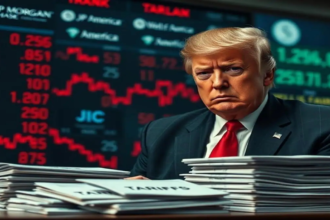Indian stock markets made a strong comeback after the long weekend, with the NSE Nifty 50 Index rising as much as 2.4%, wiping out earlier losses triggered by US President Donald Trump’s announcement of reciprocal tariffs. This rebound positions India as the first major equity market globally to recover from the tariff-induced dip, while broader Asian markets remain down over 3% since the news broke.
The sharp recovery reflects growing global investor confidence in India as a safe haven amid geopolitical and trade uncertainties. With the US-China trade war intensifying, India’s large domestic consumption base and balanced approach to foreign policy have helped it stand out. Unlike China’s aggressive tariff response, India has opted for a more diplomatic tone, seeking a temporary trade agreement with the US instead of immediate retaliation.
Analysts believe India stands to benefit from the reconfiguration of global supply chains, as businesses look to diversify away from China. “We remain overweight on India in our portfolios,” said Gary Dugan, CEO of The Global CIO Office, citing the country’s internal strength and attractiveness as a manufacturing hub.
The recent bounce in markets follows a challenging period for Indian equities, which had dropped nearly 10% due to economic slowdown fears, expensive valuations, and heavy foreign outflows. Foreign institutional investors (FIIs) have already withdrawn over $16 billion from Indian stocks in 2025—just short of the record $17 billion outflow in 2022.
However, sentiment is turning more positive. Indian stocks now appear undervalued, trading at 18.5 times forward earnings, below their five-year average of 19.5 times, and well off the peak multiple of 21 seen in September. Lower crude oil prices, which are a boon for India’s import-heavy economy, are also fueling optimism. Many expect the central bank to cut interest rates, providing further support to growth and markets.
Rajat Agarwal, strategist at Societe Generale, emphasized India’s limited trade exposure to the US, noting that just 2.7% of US imports come from India, compared to 14% from China and 15% from Mexico. He added that this insulation, combined with falling oil prices, could continue to support Indian equities in the near term.

